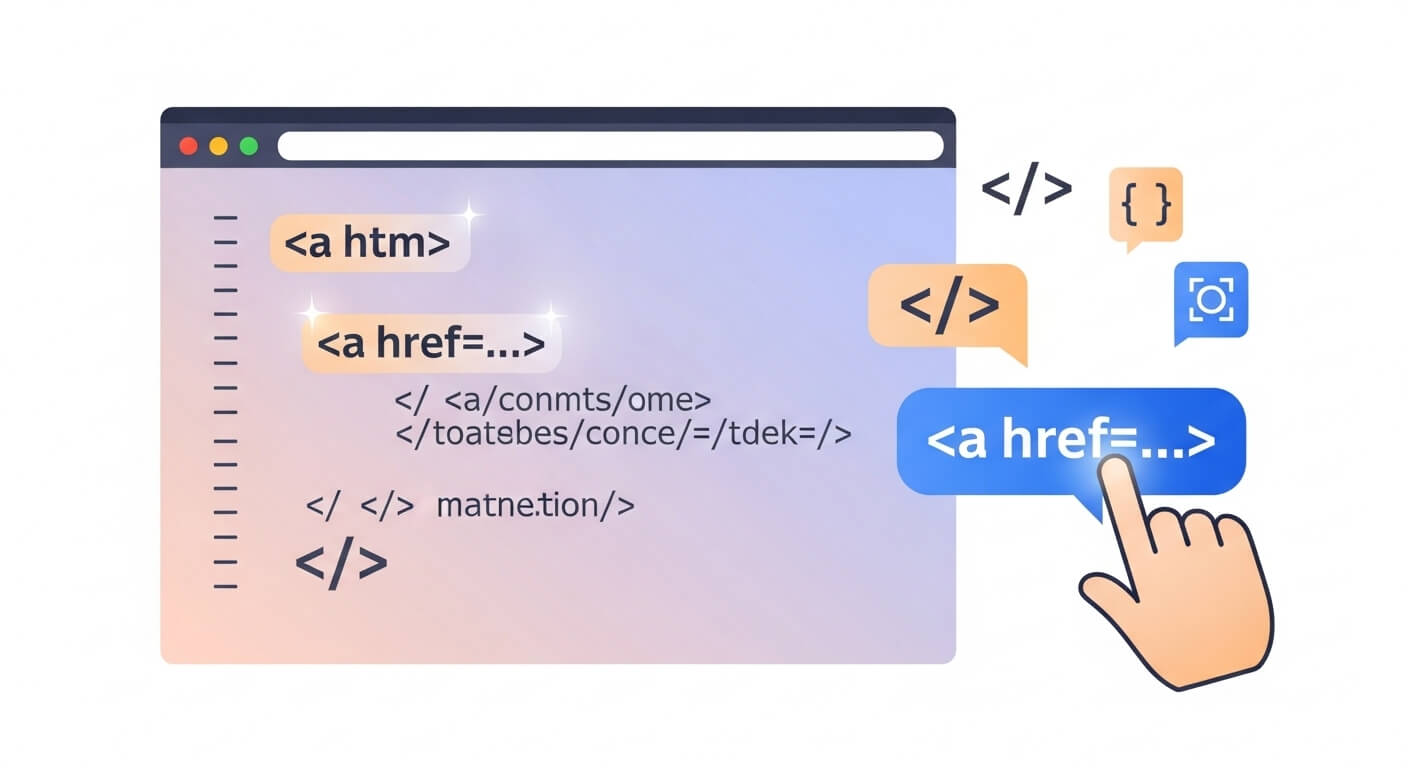If you’re wondering what is the correct HTML for creating a hyperlink, you’re not alone. Hyperlinks are one of the core building blocks of the web. Without them, navigation between pages, sites, or even within a document would be impossible.
In this guide, we’ll break down the correct HTML syntax for creating hyperlinks, common mistakes to avoid, and best practices you should follow to make your links user- and SEO-friendly.
Basic HTML Hyperlink Syntax
At its core, the answer to what is the correct HTML for creating a hyperlink lies in the <a> tag—also known as the anchor tag.
Here’s the Basic Syntax:
<a href="https://www.example.com">Visit Example</a><a>– This is the anchor element.href– The attribute that holds the URL.Visit Example– The clickable text that users will see.</a>– Closes the anchor tag.
This will create a clickable link that takes the user to https://www.example.com.
Types of Hyperlinks in HTML
Understanding what is the correct HTML for creating a hyperlink also means recognizing the different types of links you can create:
1. Absolute URLs
Used for external links:
<a href="https://openai.com">OpenAI</a>2. Relative URLs
Used for internal links within the same site:
<a href="/contact">Contact Us</a>3. Email Links
Used to open the user’s email client:
<a href="mailto:support@example.com">Email Us</a>4. Telephone Links
Used for mobile dialing:
<a href="tel:+1234567890">Call Us</a>5. Anchor Links (Jump Links)
Used to jump to a specific part of the page:
<a href="#section1">Go to Section 1</a>Best Practices for Using Hyperlinks in HTML
Even if you know what is the correct HTML for creating a hyperlink, using them effectively is a different story. Here are some important best practices:
Use Descriptive Anchor Text
Avoid generic text like “Click here.” Instead, describe the link destination:
<a href="https://developer.mozilla.org/en-US/docs/Web/HTML/Element/a">HTML `<a>` Element Guide</a>Open External Links in New Tabs
Use target="_blank" for better user experience:
<a href="https://example.com" target="_blank" rel="noopener noreferrer">Visit Example</a>Use the rel Attribute for SEO and Security
Add rel="noopener noreferrer" when using target="_blank" to avoid performance and security issues.
Keep URLs Clean and Consistent
Messy or broken links hurt UX and SEO. Always double-check your URLs.
Common Mistakes to Avoid
Learning what is the correct HTML for creating a hyperlink means steering clear of errors like:
- Forgetting the
hrefattribute
Incorrect:
<a>Broken Link</a>- Using full URLs unnecessarily for internal links
- Not closing the
<a>tag properly - Adding JavaScript or complex functionality that breaks usability
Why Correct Hyperlink HTML Matters for SEO
Hyperlinks are not just for user navigation—they are vital for search engine optimization. When you use the correct HTML for hyperlinks:
- Search engines can crawl your site more effectively
- You improve site structure and authority
- You reduce bounce rates with relevant linking
According to Google’s SEO Starter Guide, well-structured hyperlinks help both users and bots navigate your content more efficiently.
Additional Resources
Want to dig deeper into what is the correct HTML for creating a hyperlink? Check out these trusted resources:
Conclusion
By now, you should have a solid understanding of what is the correct HTML for creating a hyperlink. It’s a simple concept on the surface, but getting it right has significant benefits for your website’s usability and SEO.
Just remember:
- Always use the
<a>tag properly. - Make sure your
hrefattribute is accurate and complete. - Use descriptive anchor text.
- Follow best practices for UX and SEO.
Mastering hyperlinks is a small step that leads to big improvements in your web development journey.


Leave a Reply